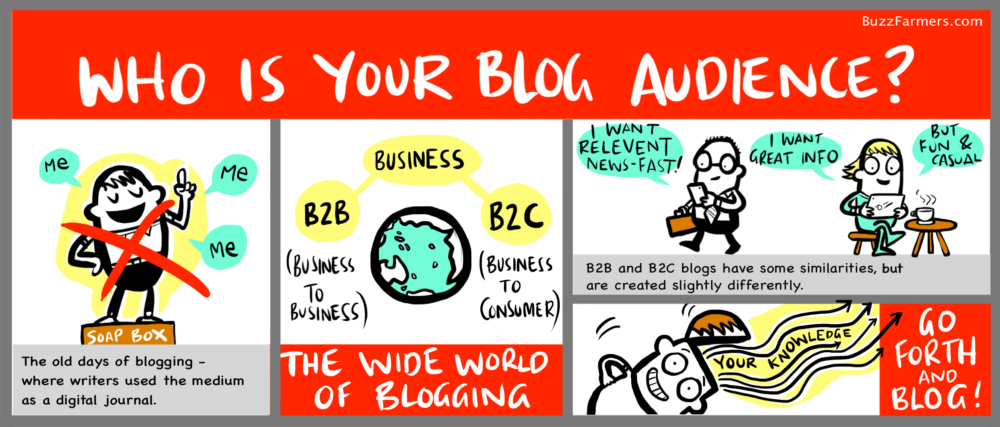If you don’t have a strong working knowledge of blog optimization, you’ll have a hard time getting ranked in search engines.
By now, many businesses understand that SEO is a major audience development strategy used by digital publishers, organic digital marketers, and any website owner that recognizes the potential in search. As an SEO writer, I’ve seen up close the positive results of utilizing a comprehensive SEO strategy. This has included numerous page one rankings for keywords that I’ve researched for BuzzFarmers clients looking for a boost in traffic – and, more importantly, customer conversions.
Are you struggling with how to SEO a blog post? Don’t stress! Let’s take a look at some of the rules for optimizing your digital content. Think of it as an SEO primer, with this very post serving as a great example!
6 SEO Primer Points for Your Digital Content
SEO Primer Point 1: Optimize Your Title
To start off, let’s assume that you’ve already researched keywords and found one that suits your subject matter, has relevant search volume attached to it, and doesn’t already have an absurd amount of competition.
Once that set of criteria is met, place your keyword in the title of your article. Title is the most important section of your content to optimize. The title tells your readers, and Google, what the article is primarily about. The value of the title in terms of SEO is greater than the other sections of your article.
As you might have figured out by now, “SEO primer” is my keyword for this post.
According to Google, there’s an average of 90 monthly searches for this phrase, with just 6,280 competing pages containing it. While there were several other options for keywords – some with far more searches but also far more competing pages, for instance – this one proved to make the most sense by our formula.
SEO Primer Point 2: Use a Variety of Headings
Digital content is often formatted differently than print material. In most cases, webpages will be broken up into different sections. This makes it easier for the reader to find the content that he or she is seeking. It also reduces eyestrain, as the webpage isn’t dominated by large blocks of text.
When you break your webpage into different sections, you’ll likely give each section a header. H3 and H4 tags (in HTML) typically differentiate these different sections. Header tags like H2, H3, and H4 carry more SEO weight than words formatted as standard paragraph content. These headers should include your primary keyword phrases, and using them here will help more in your SEO efforts. For this reason, always include a subhead and section headers.
Notice my headings throughout this post.
[Tweet “When using images in your business blog posts, don’t just settle for aesthetics. “]SEO Primer Point 3: Image Tags
When you use images in your posts, they aren’t just for aesthetic pleasure; they can also be used in your SEO efforts. As images stand normally, search engines won’t recognize their relevance and connect the dots. However, if you name the image with your keywords and with a proper alt tag, you can use your keyword phrase and still describe the image. The search engine crawlers will then be able to read what the image is depicting.
If you do go this route, be sure you aren’t keyword stuffing in these alt tags. Keep it simple and accurate, while only using one keyword in the tag. That’s actually a rule for all SEO – keep it simple, be accurate. Choose a keyword and have fun with it.
SEO Primer Point 4: The URL
Since Google looks at many aspects of your content to determine rank through optimization, it’s no surprise that the URL is important for SEO. Most of the time, content managers will include the headline word for word in the URL. And if you’re following my first rule of using your keyword phrase in your title, then you’d be transferring that same keyword into the URL. Utilizing all the places to create alignment of your keyword on pages will be the best strategy for ranking well.
Take a look this post’s URL to see this advice in action.
SEO Primer Point 5: Meta Tags
Content management platforms like WordPress allow users to input keyword tags into the system. Once these keywords are displayed in articles, the user can click on them to see other articles using the same tags. This is another way to tell your audience and search engines that these words are important to your content and that they are used within it.
One big rule: Don’t add tags to any articles that aren’t actually in your article.
Some meta tag examples in this post are “blog optimization” and “how to seo a blog post.”
SEO Primer Point 6: Extend Your SEO Reach
Even after following these steps – and reaching a keyword density of about 2% (don’t over-optimize!), before publishing your article – there’s no guarantee you’ll rank right away. It might take a while, depending on the competition that exists on the keywords you’re targeting and other factors, like how well you promote your content.
However, there’s a way to help your article along, and that’s by using social media. Twitter and Facebook are not only great ways to promote your content, but posting and Tweeting your content in conjunction with your targeted keywords will help in the SEO process. It’s like having additional optimization strength behind your content.
Follow BuzzFarmers on Twitter to get an idea of how we promote our own content!
Blog optimization is a labor-intensive process. Google is fickle and you must always be careful to focus on the quality of content first, and optimization second. Don’t write about things you don’t know, just to nail a few good keywords.
For us, optimization is all fun and games. It’s creative, challenging, analytical, and satisfying – and I hope it can be for you, too. You must research, write great content, and know how to optimize every aspect of it if you want to get ranked. You also have to know the best ways to promote that content, which in turn helps the ranking process.
But the upside is tremendous. With care and consideration, your already excellent content can become visible to a segment of searchers – and potential customers – that might transcend your expectations.
Any follow-up questions after our SEO primer? Ask away in the comments, or send us an email!




